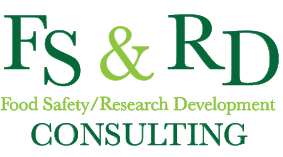ISO 9001:2015 Quality Management Program: What's new and different!
How many ways can you package a quality program and make it unique and different?
Last week I attended a training course for ISO 9001:2015 and there were a lot of the same quality standards that I’ve seen in other programs such as BRC, SQF etc. But there are some differences that do make the ISO program unique and allow it to cater more readily to some companies. I see it being especially good for small, family run businesses where people know what they are supposed to do because they’ve been doing it for so long.
This version has made some major changes from the 2008 version for the better.
This standard differs from the previous version and I believe that users of this version will find it a lot more user friendly. This scheme is designed so that it is manageable for both small and large companies. It is focused on using process & evidence based approach to look at the work being done, with significantly less focus on documentation. The importance is placed on the actions of the company.
A lot of quality and food safety programs focus heavily on the documentation: write what you do and do what you write. This program is more say what you do and do what you say. In many instances if people are able to say what it is they do then that is okay. In fact, if there is missing documentation, it alone shouldn’t result in a non-conformance. This is vastly different than many schemes, and I for one think that this is an excellent difference. It makes this program much more user friendly for those companies where the employees all know what they are supposed to do but don’t have SOPs (Standard Operating Procedures) that they follow.
The process approach is not unique and many in the quality industry use this frequently for some of the processes such as the production process. Many of you are likely quite familiar with the process flow diagram in the HACCP program. ISO 9001:2015 extends this approach to all processes such as purchasing, customer complaints, non-conformances. This approach looks at all of the inputs and resources needed to make the process work and then focuses on the controls that are used and the expected process output. The output focuses on assuring that the process is efficient and effective.
All programs currently on the market are evidence based, and this hasn’t changed with ISO 9001:2015. The audit still focuses on interviewing and observation to provide the auditor with the evidence that the program is working.
A key metric is the emphasis the program places on continuous improvement. Although all programs have been designed with this key metric in mind, this one does so differently. The tools to achieve improvement are still the same, focusing on customer complaints, non-conformances, management review and internal audits to find all of the areas that require improvement. But a key difference is that the auditor should see evidence that not only have these been corrected, but, if they were significant, that they resulted in upgrading the quality program. This is hinted at in all quality programs but I see this more focused within the ISO 9001:2015 program.
So, how many times can you package the same information into a quality program and make it unique and different? The answer is at least one more way. Although the fundamental concepts in all of the programs on the market are the same, each one spins it a little differently. Choose the one that best suits your needs. If you are most focused on continuous improvement and aren’t so paperwork based then ISO 9001:2015 is a good choice! The program is designed for any type of manufacturing (not just food) that wants to have a quality management program in place.
If you believe that this quality program is right for you but you aren’t sure how to get started, give me a call and I’d be happy to discuss this program with you in greater detail! Check me out at www.fsrdconsulting.com.
